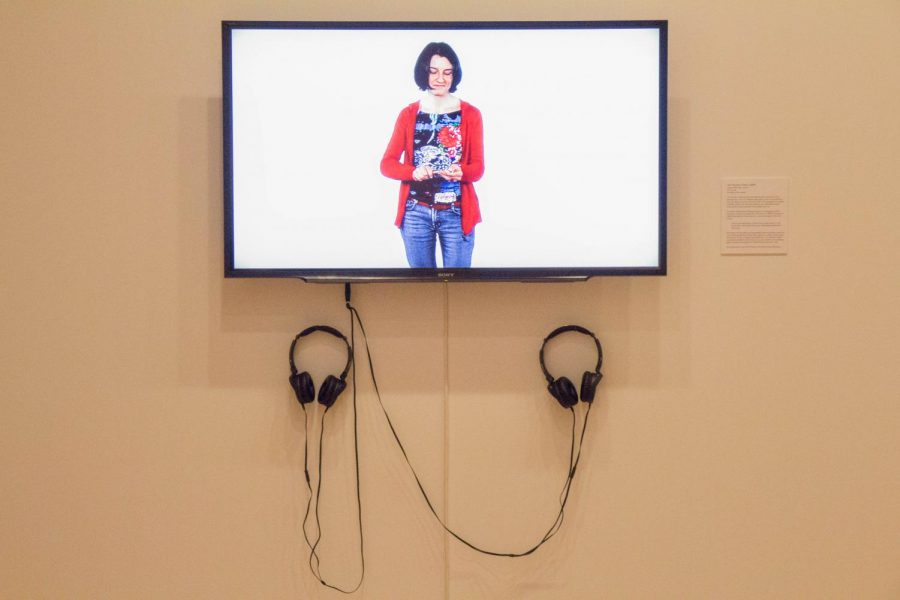Irish artist grapples with ‘Real World Harm’ at Krannert Art Museum
Gareth Kennedy and Sarah Browne, two artists best-known throughout Europe, have conceptual art presented in an exhibit at Krannert Art Museum. The exhibit is on display until Feb. 9.
Nov 13, 2018
Two Irish artists’ first solo exhibition in the U.S., “Kennedy Browne: The Special Relationship,” is on display at Krannert Art Museum through Feb. 9.
Kennedy Browne is a collaboration of Gareth Kennedy and Sarah Browne. Their work focuses on and challenges technology, privacy and global commerce while addressing global capitalism and its impact on people’s lives.
“Over this time our working practices have changed and developed, but we have continually been grappling with the consequences of living in a globalized, capitalized society and how this affects our sense of geography, the meaning of work and social connectedness,” Browne said in an email.
“Real World Harm” is the third and most recent addition to Kennedy Browne’s “The Redaction Trilogy.” Julia Nucci Kelly, coordinator of communications and marketing at Krannert Art Museum, said this work brought up notions about the actions corporations and governments carry out when no one is looking and how this affects people.
“The artists make this interesting combination of video and sound and sculpture that really puts a visitor in the middle of the tension between human experience and how corporations or governments act,” Kelly said. “It can make you ask questions about what is true or if you’ve been misled.”
Get The Daily Illini in your inbox!
In “Real World Harm,” a character resembling an Austrian activist, who is most famous for his campaign combating Facebook’s privacy violation, transports participants to the Irish Data Protection Commissioner’s office. The office is responsible for ensuring individuals’ right to data privacy.
During the video, participants will also hear recordings of people searching through the Internet to review content and take down what they deem harmful, such as posts depicting graphic violence.
“The sound installation is composed from our interviews with former content moderators at social media corporations, who discuss their experience of monitoring harmful content online, often at considerable personal cost to themselves,” Browne said.
One work in the exhibition, “How Capital Moves,” displays people dressed in their pajamas, as they got laid off on Wear Your Pajamas to Work Day. The exhibit aims to portray ways in which workers process big decisions corporations make, such as closing down a facility. The videos show individuals’ reactions to large life changes, such as job loss, through fear, sadness, anger and relief.
“Their reactions are really personal. The artwork puts you as the viewer in the middle of that, sort of as a witness to what’s happening. It’s pretty profound,” Kelly said.
“The Redaction Trilogy,” which consists of sculptural installations and sound systems that explore the impact of neoliberal processes of technology, politics and commerce on individuals, will debut at this exhibition. Videos will also be displayed, including Kennedy Browne’s newest creation, “Real World Harm,” a 360-degree virtual reality video critique of social media.
“I think it’s important to just let students know that seeing all of this work can take time. A video or sound piece may take 20 minutes or so to see from start to finish.” Kelly said. “We’ve seen students come on multiple trips to see different parts of the installation, and that’s really great.”
Kelly said it has been especially interesting to see how Business, Media and Engineering students have their own perspectives on it and that the exhibition is not limited to art students.
“A lot of this work is informed and inflected by American culture, whether it be the myth of Silicon Valley or material derived from workers’ blogs for a company that originated in Houston, Texas,” Browne said. “Bringing the work at last to the United States feels like it is ‘coming home’ at last. We are very pleased with this!”






